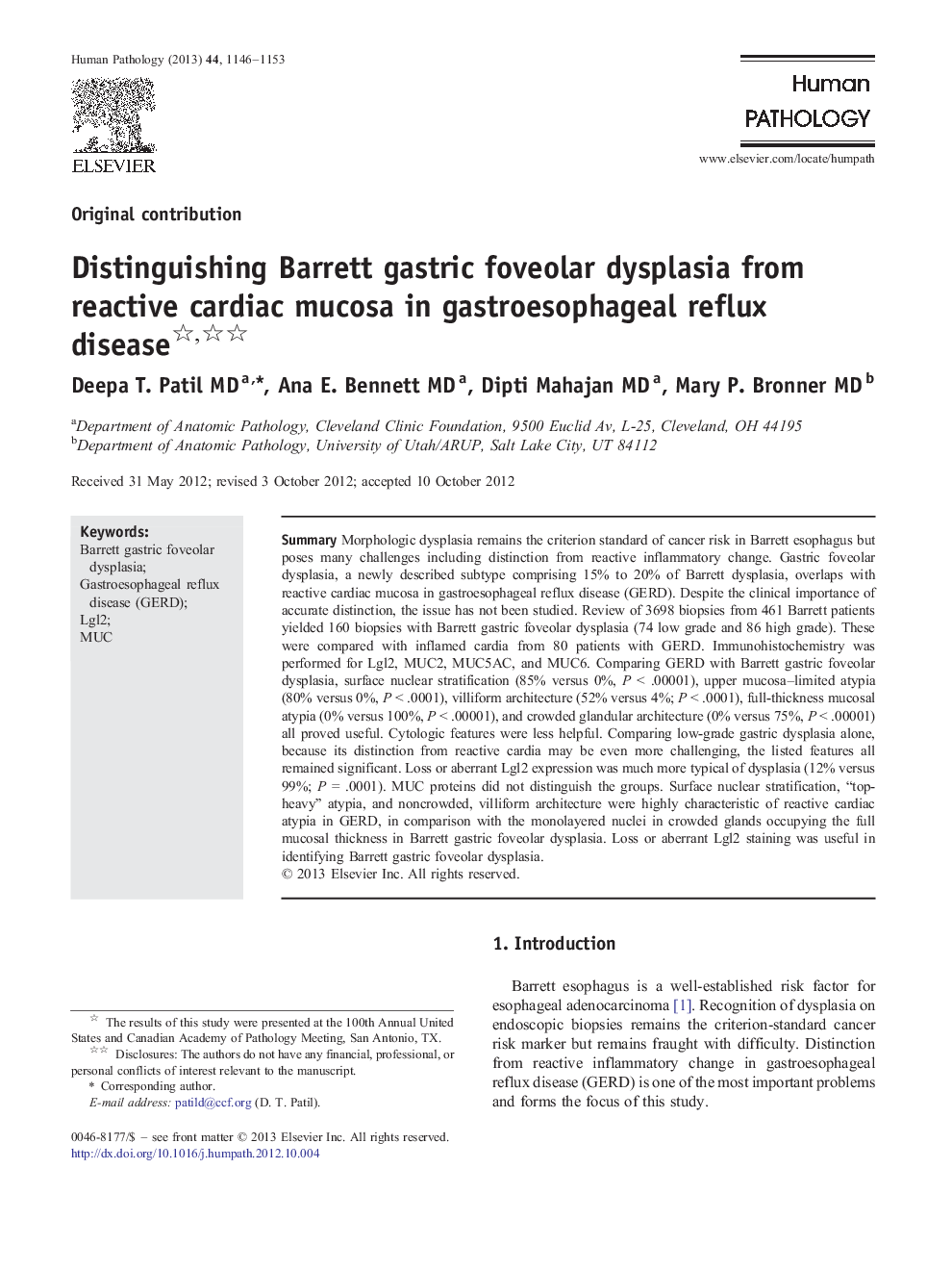| کد مقاله | کد نشریه | سال انتشار | مقاله انگلیسی | نسخه تمام متن |
|---|---|---|---|---|
| 4133650 | 1271428 | 2013 | 8 صفحه PDF | دانلود رایگان |

SummaryMorphologic dysplasia remains the criterion standard of cancer risk in Barrett esophagus but poses many challenges including distinction from reactive inflammatory change. Gastric foveolar dysplasia, a newly described subtype comprising 15% to 20% of Barrett dysplasia, overlaps with reactive cardiac mucosa in gastroesophageal reflux disease (GERD). Despite the clinical importance of accurate distinction, the issue has not been studied. Review of 3698 biopsies from 461 Barrett patients yielded 160 biopsies with Barrett gastric foveolar dysplasia (74 low grade and 86 high grade). These were compared with inflamed cardia from 80 patients with GERD. Immunohistochemistry was performed for Lgl2, MUC2, MUC5AC, and MUC6. Comparing GERD with Barrett gastric foveolar dysplasia, surface nuclear stratification (85% versus 0%, P < .00001), upper mucosa–limited atypia (80% versus 0%, P < .0001), villiform architecture (52% versus 4%; P < .0001), full-thickness mucosal atypia (0% versus 100%, P < .00001), and crowded glandular architecture (0% versus 75%, P < .00001) all proved useful. Cytologic features were less helpful. Comparing low-grade gastric dysplasia alone, because its distinction from reactive cardia may be even more challenging, the listed features all remained significant. Loss or aberrant Lgl2 expression was much more typical of dysplasia (12% versus 99%; P = .0001). MUC proteins did not distinguish the groups. Surface nuclear stratification, “top-heavy” atypia, and noncrowded, villiform architecture were highly characteristic of reactive cardiac atypia in GERD, in comparison with the monolayered nuclei in crowded glands occupying the full mucosal thickness in Barrett gastric foveolar dysplasia. Loss or aberrant Lgl2 staining was useful in identifying Barrett gastric foveolar dysplasia.
Journal: Human Pathology - Volume 44, Issue 6, June 2013, Pages 1146–1153